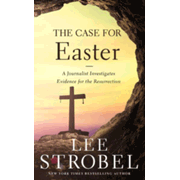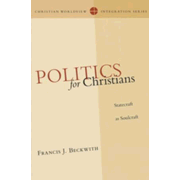FOR THE Second Sunday in Easter we read from the Gospel
According to Saint John. For your
perusal here, I offer these previous thoughts written on the subject. In
this text, we encounter a wondrous event wherein Jesus appeared to
the disciples.
To set the historical stage, know that the disciples had
already been informed by women about the empty tomb. One of those women,
named Mary, had even encountered the Risen Jesus amid that garden. Here then, we join
the account that was stressed to first century readers concerning the
Resurrected Christ Jesus. It boldly stated that he was physically raised from
the dead, and was not an apparition simply conjured up by grief-stricken minds…
“On the evening of
that day, the first day of the week, the doors being shut where the disciples
were, for fear of the Jews, Jesus came and stood among them and said to them,
"Peace be with you." When he had said this, he showed them his hands
and his side. Then the disciples were glad when they saw the Lord.
Jesus said to them again, "Peace be with
you. As the Father has sent me, even so I send you." And when he had said
this, he breathed on them, and said to them, "Receive the Holy Spirit. If
you forgive the sins of any, they are forgiven; if you retain the sins of any,
they are retained."
Now Thomas, one of the twelve, called the
Twin, was not with them when Jesus came. So the other disciples told him,
"We have seen the Lord." But he said to them, "Unless I see in
his hands the print of the nails, and place my finger in the mark of the nails,
and place my hand in his side, I will not believe."
Eight days later, his disciples were again in
the house, and Thomas was with them. The doors were shut, but Jesus came and
stood among them, and said, "Peace be with you."
Then he said to Thomas, "Put your finger
here, and see my hands; and put out your hand, and place it in my side; do not
be faithless, but believing."
Thomas answered him, "My Lord and my
God!"
Jesus said to him, "Have you believed because
you have seen me? Blessed are those who have not seen and yet
believe."
Now Jesus did many other signs in the presence
of the disciples, which are not written in this book; but these are written
that you may believe that Jesus is the Christ, the Son of God, and that
believing you may have life in his name.”
(John 20:19-31)
(John 20:19-31)
 |
The Case for Easter: A Journalist Investigates the Evidence for the Resurrection - eBook By Lee Strobel |
Know the Truth!
The disciples were gathered in the upper room on an evening
after the Resurrection. It was a secret place to hide; somewhat a tomb of their own selection.
After the Lord’s grave was found to be empty, Christians throughout the city were
being hunted by those in power. The empty tomb and
its possible repercussions for the religious authorities, fostered a very turbulent time for the disciples after the Passover
festival. The upper room hid the shocked followers of Jesus. There the small group were secure from the Jewish
temple leaders.
Historically, Passover
celebrations marked the prophetic sacrifice of lambs. They had been slaughtered annually to recall those whom God had chosen to spare from death and lead through Sinai’s desert wilderness. Once that ancestral
celebration was completed after Jesus' crucifixion, crowds of people had begun to leave the city. Subsequently the disciples remained
fearfully hidden, cowering in like nature to those of the Hebrews of the past… those historic Jews
who were once imprisoned in Egypt.
Moses had called to the children of Israel... those Jews that marched out of Egypt in times of old were afraid. You see, the disciples knew the story... that Moses did not die in Egypt. He had been with the Jews. Still the men who had been called by Christ during his ministry were very afraid. Jesus our Lord had died and was recently buried. He was was not standing in their midst telling them to go with him across the sea.
Moses had called to the children of Israel... those Jews that marched out of Egypt in times of old were afraid. You see, the disciples knew the story... that Moses did not die in Egypt. He had been with the Jews. Still the men who had been called by Christ during his ministry were very afraid. Jesus our Lord had died and was recently buried. He was was not standing in their midst telling them to go with him across the sea.
Then Jesus
suddenly appeared. The Word of God spoke in person to those in hiding. He
spoke with calming words. A traditional “Peace be with you” (“eirene umin” in
the Greek) was given. The greeting must have echoed in some respect like the words the
messenger at the tomb had told Mary… “Do
not be afraid”. The words
came from Jesus as asking for a peace that existed beyond all understanding.
However, the words fell on fearful
ears. It may seem now to us that Resurrection faith was insufficiently held
within them. But, lest we sinfully and too lightly consider the words spoken in
that upper room, let us not judge our predecessors. Can we intellectually imagine the
impact of hearing the voice of one believed to be dead?
I think that we
certainly cannot enough imagine the shock that came upon the men as they heard and saw. Bedlam resulted! I venture
that fear, crying, yelling and even more... began to shake the men who hid in that
room even though they had been told by the women that he had risen.
 |
Backgrounds of Early Christianity, Third Edition By Everett Ferguson |
After the din quieted somewhat, a first daring soul moved beyond initial shock and doubt. One by one, all were amazed by bodily proof about the Lord’s identity. John revealed to his churches that as the tumult lessened, Jesus’ was seen to empower them. Jesus reminded them that what had happened had been prophetically promised.
Let us take due note that
here at this point in the telling... is where John quickly changed our focus. John
revealed to his hearers that not all were there. John told that Thomas was not present. As
readers and hearers today who arrive untimely on the scene, we are also brought now into the
scene. Those who hear the news of an empty tomb join with the original followers. We are linked across the centuries to
understand the report.
John told his readers
that the message of the empty tomb was difficult for Thomas. I think that many who also receive this gospel report today can surely identify with this. Many persons I
know struggle today with intellectually gripping the Resurrection report. It is
a hard thing indeed. We seek evidence!
Today, as over
centuries of witness... the Truth of the miracle comes to us as a gift. It is a
gift wrapped in faith that is provided by the power of the Holy Spirit. Certainly, as so rewarded
we are called to accept what John’s churches came to understand.
 |
John, the Maverick Gospel, Third Edition By Robert Kysar |
Know this! Faith to believe in this
miracle only comes from God’s Word as provided through the Holy Spirit. For this reason
we too must search the Word, comprehending that scripture surely declares scripture! Faith
comes by the receiving of this spiritual knowledge. As Saint Paul echoed..,
“For by grace you have been saved through
faith; and this is not your own doing, it is the gift of God, not because of
works, lest any man should boast.” (Ephesians 2:8-9)
The stage was therefore described as set wonderfully by John’s writing.
The writer brought Thomas face-to-face with the Risen Lord, and we as readers
now also have become witnesses to the scene as well. The Truth is revealed to all!
Immediately, the normative declaration was made by that disciple, "My Lord and my God!" Thus with exclamatory zeal... kingdom
building was furthered.
 |
Politics for Christians: Statecraft as Soulcraft By Francis J. Beckwith |
Tell This Truth!
Examine the words of John closely as we look for lessons in our own day.
We need only see the history of the Christian church during the latter years of the first
century. John’s gospel was likely written c.85-95, as a highly symbolic telling.
It included rather sophisticated symbols of double meaning. In this gospel then, many
forms of storytelling which are found in classical Greek texts are used. Therefore,
we collectively may assume that John wrote primarily to Greek and the dispersed and highly educated Hebrews who
gathered within the heart of the Roman Empire. His symbolic
writing style points out a witness subtly, and is meant to attract those upper, educated
classes, as well as those who are lesser learned.
Were educated and moneyed persons
confronted by the gospel witness? If the answer is affirmative, we modern persons may also liken ourselves
to those of the past world who had then arrived in finance and education. Consequently so, are we then not
challenged also by this gospel reading?
Some biblical authorities
say that the original gospel text ended here. It is taught by those who exercise historical criticism that the following
chapter was applied by a later editor. Therefore, if these scholars are
correct, the initial telling ends with a rather appropriate phrase. The text tells us why this
gospel writing even exists. Blessed John stated that he wrote this enchanting
storytelling, so… “that you may believe
that Jesus is the Christ, the Son of God, and that believing you may have life
in his name.”
Therefore, if we hold
to this scriptural appraisal, we in modern society are now invited to highly recommend
the Gospel of John to others. I especially contend that it be placed on the “must read”
list for those who like a good book. When they ask us after reading, “How is this thing... this Resurrection possible…?”, we are surely invited to witness about the faith given to us. We may say with certainty that the Spirit answers our query… “With God all things are possible!” Therefore, we see that it is for
us who are made wealthy in the knowledge of our redemption.., those who
have been
granted faith without our seeing the tomb… to be empowered by the
Holy Spirit. In the modern world we are called mystically to tell the great story
concerning the saving grace of Almighty God.
Please enjoy our Easter turn around, and drive video...
Please enjoy our Easter turn around, and drive video...
With God.... All Things Are Possible!

No comments:
Post a Comment